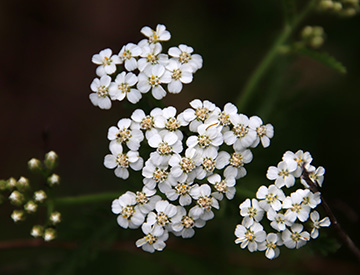
Artist Jack Lewis painted this watercolor of Lawyer’s Row in Chestertown, across from the Masonic Lodge building, in the mid 20th century.
Lawyer’s Row on Court Street in Chestertown, a collection of distinctive one-story offices crowded together in the shadows of the nearby courthouse, for centuries has been witnessing wills, title searches and property transfers, a wide variety of contracts, divorces and other civil and criminal legal matters.
Though the digital age has diluted the once-steady flow of people walking between the law offices and the Kent County courts, Lawyer’s Row today continues to house at least five active law offices and the practices of more than a dozen lawyers. Peeling paint, cob webs and crooked windows here and there signal varying degrees of maintenance while adding to the charm wrought by decades of generational transactions over the decades. At least one of the offices has been converted to a ‘pied a terre’ style residence while another’s windows now sport photos of real estate listings.
In the early 1950s, prolific Eastern Shore artist Jack Lewis published a large-format hard cover book titled The Chesapeake Bay Scene. In his ramblings up and down the shore, Lewis captured the people and places of the tidewater region in literally hundreds of sketches and watercolors.
Lawyer’s Row caught his attention during a visit to Chestertown. As was his wont, Lewis set up his easel near the edge of a nearby street and went about freezing a moment in time on a fair weather day.
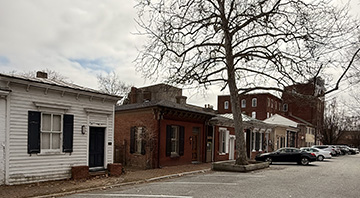
A large sycamore tree, shown here, used to shade a wide swath of Lawyers Row but was removed in the past year due to disease. “It was almost completely dead,” said Billy Sullivan of Bartlett Tree. “Branches five and six inches in diameter were falling on the buildings and sidewalks. It had become a real hazard.” Sullivan, a member of the Chestertown Tree Committee, said discussions are underway about possibly replacing the tree which had reached an age, he guessed, between 60 and 75 years.
In addition to his artistic work, Lewis wrote notes to accompany each scene, including human interest, composition and philosophy details that rambled through his brain between the colorful dashes of his brush strokes. Here are the notes he recorded, as a young artist, with his Lawyer’s Row scene.
“Title: Lawyers Row, Chestertown
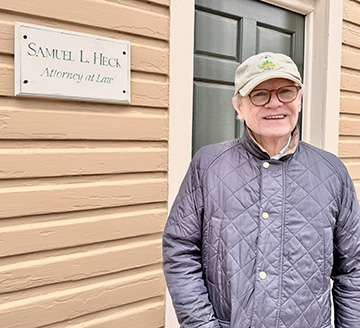
Sam Heck has been practicing law for more than three decades in the Lawyers Row office where his father, Preston P. Heck, practiced for several decades before him.
“Human Interest: The name explains itself . . . a row of charming little houses . . . law offices. People are busily stepping from one doorway to another, and in and out of the soft maple shade. It is like a song in true harmony. A cart lumbers along the street in an interval sufficient to make itself fixed indelibly upon the design. As I stood at my painting a man spoke to me. Upon raising my eyes, they rested upon a most radiant subject. A blooming young woman with flaxen hair, eyes dark with mascara and false lashes, great gray eyes. In confusion my attention switched between the two people. The young man ranted on until she quite abruptly cried, ‘Come on Bill! Let the kid alone.’”
Lewis clearly had an eye for more than just architecture. Though he didn’t paint the ‘blooming young woman,’ he did include in his Chesapeake Bay Scene many portraits of the people he encountered in his travels. People coming upon artists working outside ‘en plein air’ usually have to satisfy their curiosity by taking a look at the work in progress and chatting it up with the artist.
His comments about Lawyer’s Row continue:
“Composition: As the cart passed, the question arose. ‘Will it fit with the composition?’ During a flash of resolve I reached for the cart. It found a place in the design just below the houses. Coincidentally, the wagon had the coloring of the trees and houses.
“Philosophy: The universe seems to sing when all its components fit in well together. To be on a corner in Chestertown witnessing the singing of all the parts of ‘Lawyers Row’ rewarded me with a sense of well being. What better way to start off than with such awareness of the harmony of the world then to pause somewhere and paint it!”
Lead photo: Artist Jack Lewis painted this watercolor of Lawyer’s Row in Chestertown, across from the Masonic Lodge building, in the mid 20th century.
All photos by Dennis Forney.
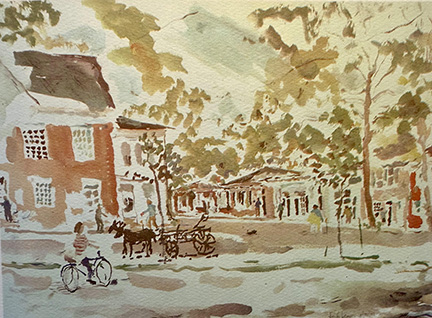


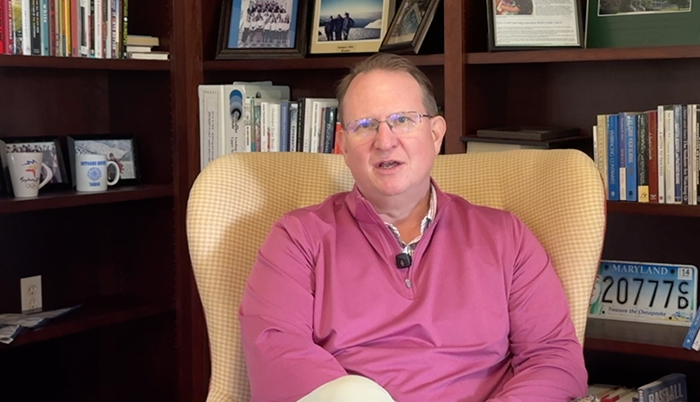

 I came to know Yana that spring, after the Russian occupation ended, when I was contracted to design a children’s book raising awareness and support for Ukraine. As part of the agreement, I was to help select a Ukrainian artist to create more than a dozen color illustrations for the manuscript by Dr. Janice Cohn, a children’s book author and psychotherapist. Janice, a donor to the Ukraine Children’s Action Project (UCAP), contacted the organization’s co-founder, Dr. Irwin Redlener to see if they could recommend a Ukrainian artist. She was then put in touch with UCAP’s Regional Director, Yuliia Kardash, who spent many hours researching artists who might be suitable for the project, and finally recommended Yana. After reviewing Yana’s work, Janice and I agreed she was the perfect choice. Our correspondence began soon after.
I came to know Yana that spring, after the Russian occupation ended, when I was contracted to design a children’s book raising awareness and support for Ukraine. As part of the agreement, I was to help select a Ukrainian artist to create more than a dozen color illustrations for the manuscript by Dr. Janice Cohn, a children’s book author and psychotherapist. Janice, a donor to the Ukraine Children’s Action Project (UCAP), contacted the organization’s co-founder, Dr. Irwin Redlener to see if they could recommend a Ukrainian artist. She was then put in touch with UCAP’s Regional Director, Yuliia Kardash, who spent many hours researching artists who might be suitable for the project, and finally recommended Yana. After reviewing Yana’s work, Janice and I agreed she was the perfect choice. Our correspondence began soon after.
 Since neither of us spoke the other’s language, Yana and I labored through a translation app to agree on how each illustration would appear using both her innate artistic intuition and scene requirements (complex positioning of multiple people, expression, etc.) on our part. And, for all I knew, despite cross-checking, a word in the Ukrainian app expressing “joy” could have been slang for “potato.” But she was kind, and rather than pointing out a translation problem simply asked for clarification. Some of the illustrations would take several more versions.
Since neither of us spoke the other’s language, Yana and I labored through a translation app to agree on how each illustration would appear using both her innate artistic intuition and scene requirements (complex positioning of multiple people, expression, etc.) on our part. And, for all I knew, despite cross-checking, a word in the Ukrainian app expressing “joy” could have been slang for “potato.” But she was kind, and rather than pointing out a translation problem simply asked for clarification. Some of the illustrations would take several more versions. Janice’s new narrative grew out of her “conviction that kindness and compassion can steady children in even the darkest times, and that in helping others, we often find our own resilience.” The book became a parallel story about two children, a boy, Artem, escaping Ukraine with his mother, and a girl, Hannah, in America who became determined to raise funds for the war-torn country. Chapters became counterpoint narratives about each child’s experience.
Janice’s new narrative grew out of her “conviction that kindness and compassion can steady children in even the darkest times, and that in helping others, we often find our own resilience.” The book became a parallel story about two children, a boy, Artem, escaping Ukraine with his mother, and a girl, Hannah, in America who became determined to raise funds for the war-torn country. Chapters became counterpoint narratives about each child’s experience.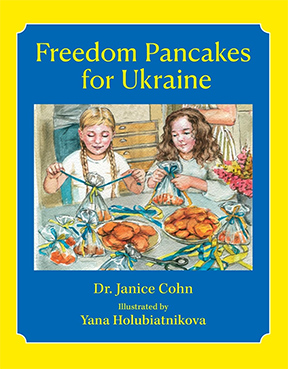 For Janice, the book became more than a story—it became a reminder that even small acts of care can repair the world. Yana eventually received some copies of the book.
For Janice, the book became more than a story—it became a reminder that even small acts of care can repair the world. Yana eventually received some copies of the book.
